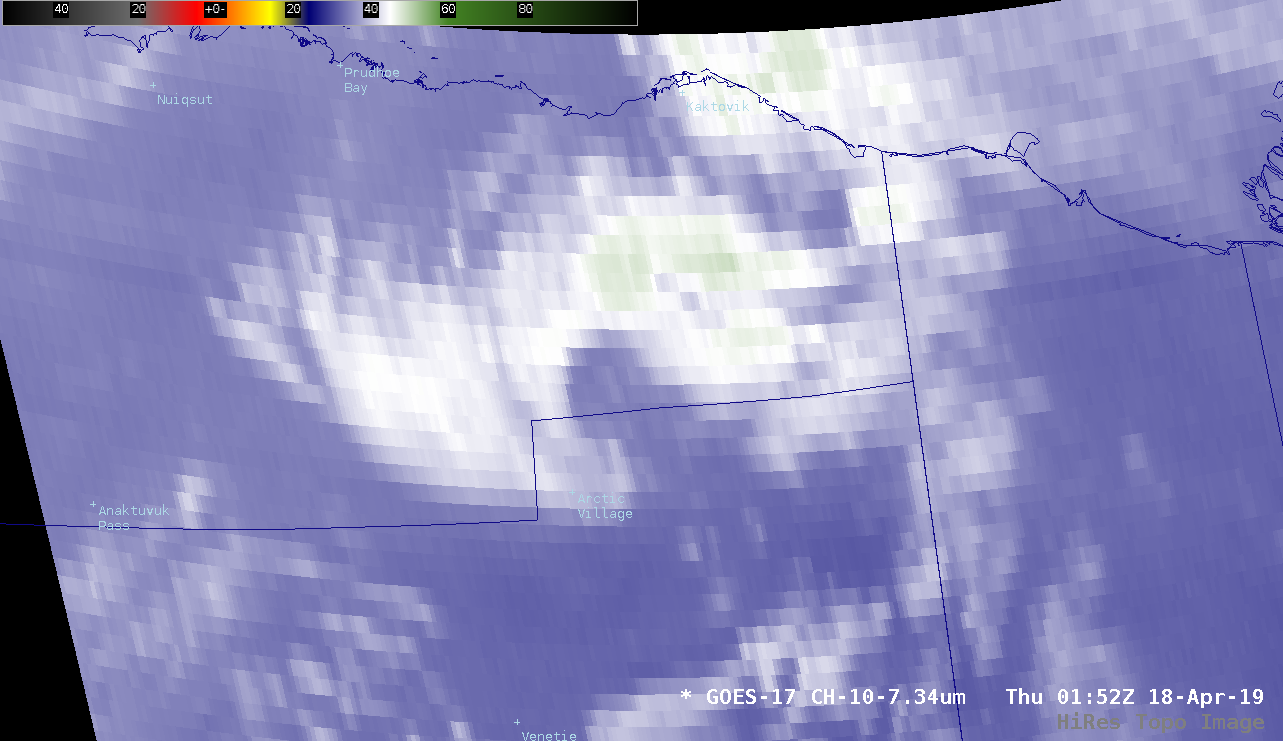Mesoscale disturbance over northern Alaska

GOES-17 “Red” Visible (0.64 µm) and Low-level Water Vapor (7.3 µm) images [click to play animation | MP4]
Light to moderate snow was reported at Arctic Village as this mesoscale disturbance moved over the area (below).
375-meter resolution Suomi NPP VIIRS Day/Night Band (0.7 µm) and Infrared Window (11.45 µm) images at 2131 and 2313 UTC (below) provided a more detailed view of this feature, in which the clouds exhibited an appearance suggestive of embedded convection. Cloud-top infrared brightness temperatures were as cold as -50ºC just southwest of Arctic Village on the 2313 UTC image — this corresponded to an altitude of 8.5 km on the 00 UTC Fairbanks rawinsonde data. 13-km NAM model fields (below) showed no clear signature of either a closed circulation or a discrete vorticity center — so satellite imagery was depicting the presence of an important feature that was not captured by numerical models. While the 18 UTC model run did show an area of light precipitation moving northward toward the region, the 00 UTC model run scaled back the areal coverage of this precipitation.

![Suomi NPP VIIRS Day/Night Band (0.7 µm) images at 2131 and 2313 UTC [click to enlarge]](https://cimss.ssec.wisc.edu/satellite-blog/wp-content/uploads/sites/5/2019/04/190417_suomiNPP_viirs_dayNightBand_AK_anim.gif)
![Suomi NPP VIIRS Infrared Window (11.45 µm) images at 2131 and 2313 UTC [click to enlarge]](https://cimss.ssec.wisc.edu/satellite-blog/wp-content/uploads/sites/5/2019/04/190417_suomiNPP_viirs_infraredWindow_AK_anim.gif)
![3-km NAM 500 hPa height, wind and absolute vorticity [click to enlarge]](https://cimss.ssec.wisc.edu/satellite-blog/wp-content/uploads/sites/5/2019/04/190417_nam-hires_500hPa_vorticity_height_AK_anim.gif)
![3-km NAM Mean Sea Level Pressure and 1-hour accumulated precipitation [click to enlarge]](https://cimss.ssec.wisc.edu/satellite-blog/wp-content/uploads/sites/5/2019/04/190417_nam-hires_1hour_precipitation_AK_anim.gif)